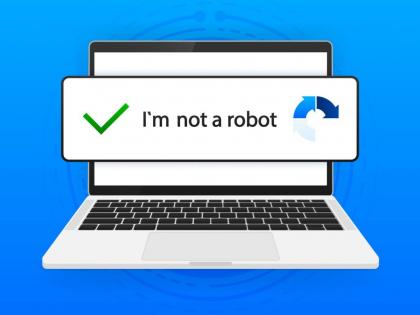“I’m Not a Robot”: Why Websites Ask You to Prove You're Human? Know the Secret Behind This Checkbox
By Lokmat English Desk | Updated: May 24, 2025 17:07 IST2025-05-24T17:06:10+5:302025-05-24T17:07:33+5:30
If you’ve ever browsed the internet, chances are you’ve come across the now-familiar checkbox labeled “I’m Not a Robot.” ...

“I’m Not a Robot”: Why Websites Ask You to Prove You're Human? Know the Secret Behind This Checkbox
If you’ve ever browsed the internet, chances are you’ve come across the now-familiar checkbox labeled “I’m Not a Robot.” While it might appear to be just another routine click, this tiny box hides a complex and powerful system working behind the scenes. This checkbox is part of what’s known as a CAPTCHA (Completely Automated Public Turing test to tell Computers and Humans Apart), a security mechanism designed to distinguish real users from automated bots. It plays a vital role in protecting websites from a range of digital threats such as spam, data scraping, and fraud.
But what happens when you click it?
Behind that simple checkbox lies a sophisticated behavioral analysis system. Even before the user clicks, the system begins tracking page interaction—monitoring mouse movements, scrolling behavior, and the timing of clicks. Human actions are typically a bit unpredictable, whereas bots tend to be overly precise. These subtle differences help the system decide whether the user is genuine.
The system also gathers information from the user's device and browser—an approach called browser fingerprinting. This includes data such as IP address, screen resolution, browser version, installed plugins, and time zone. Together, this creates a digital profile that can indicate whether the browsing environment is typical or suspicious, such as when a user is operating through a headless browser or a bot-connected VPN.
Users who are signed in to a Google account and using Google’s reCAPTCHA may also have their recent browsing activity taken into account to verify authenticity. If everything appears normal, the user is immediately granted access. If anything seems unusual, however, a visual challenge may be triggered, commonly involving tasks like selecting images of traffic lights or buses.
Also Read: A ‘Made in US’ Apple iPhone can cost nearly Rs 3 lakh: Analysts
Though simple for humans, these challenges are deliberately difficult for bots, especially those lacking advanced image recognition capabilities.
In essence, the “I’m Not a Robot” checkbox is far more than a basic formality. It’s the gateway to a high-tech verification system designed to protect websites from automated abuse. With just a few clicks and gestures, CAPTCHA systems silently guard the digital world, ensuring a safer and more secure browsing experience for all.
Open in app